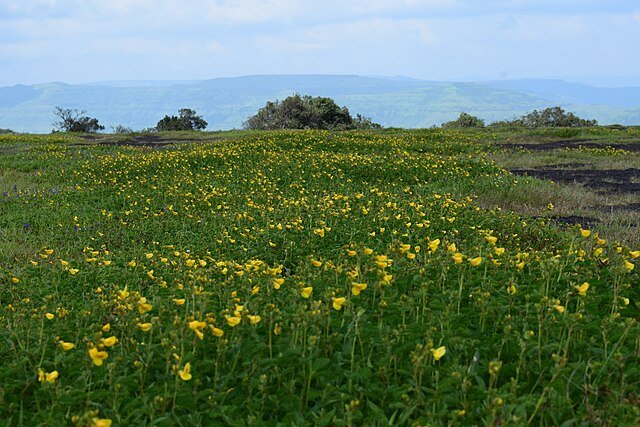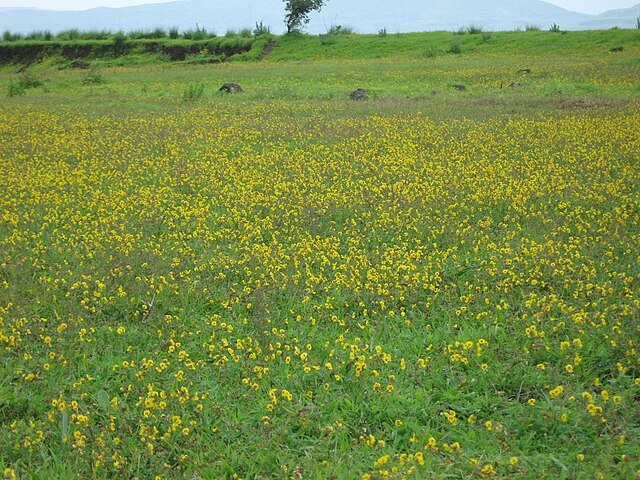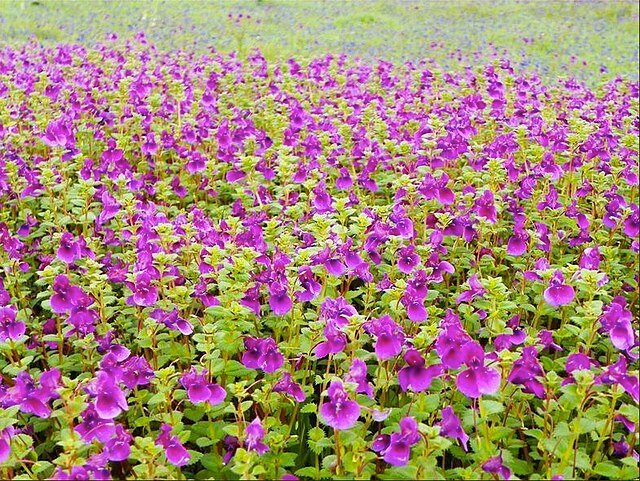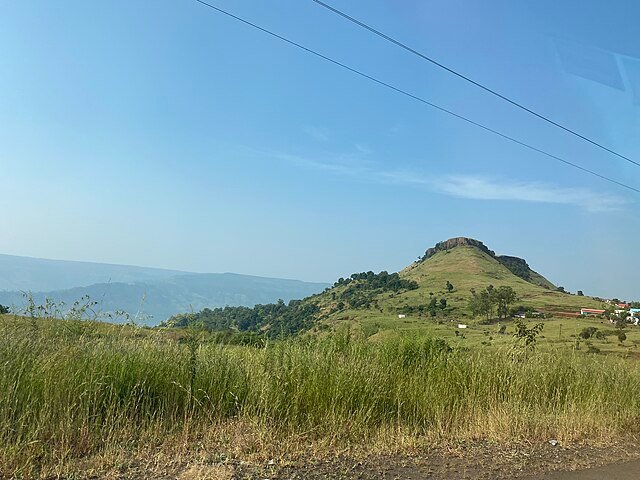Nestled in the heart of Maharashtra, the Kaas Plateau, also known as Kaas Pathar, is a UNESCO World Natural Heritage site that transforms into a breathtaking carpet of flowers every year. This unique natural phenomenon occurs after the monsoon season, typically during September and October, when thousands of rare flower species bloom, creating a vibrant feast for the eyes. May you like to read : The Famous Oldest Fort in India
This blog post provides a comprehensive guide to visiting this natural wonder, including why it’s a must-visit destination, essential information on booking, and a list of nearby attractions to extend your journey.
What’s Blooming on Kaas Plateau?

Kaas Plateau is currently adorned with a spectacular variety of blooms in shades of yellow, purple, pink, and blue. Over 850 species of plants have been identified here, including several rare ones.
- Karvi
- Sonki
- Topli Karvi
- Pandhri Bakuli
- Aboli
Why You Must Visit the Kaas Plateau?

Visiting the Kaas Plateau is more than just a trip; it’s an immersive experience into a rare and delicate ecosystem. Here’s why this place should be on every nature lover’s list:
- A Living Canvas: Kaas Plateau, which is a part of the Sahyadri sub-cluster of the Western Ghats, is not covered by perennial vegetation. Instead, its unique volcanic rock and thin layer of lateritic soil create the perfect conditions for a diverse array of ephemeral plants to thrive during the monsoon season. This results in a spectacular and ever-changing display of colors that covers the entire 1,000-hectare area, making it look like a painted landscape.
- Biodiversity Hotspot: Kaas is a globally recognized biodiversity hotspot with an incredibly high degree of endemism. It is home to over 850 species of flowering plants, including rare and endangered species. You can find unique varieties of orchids, carnivorous plants like Drosera Indica and Utricularia, and countless types of shrubs and grasses. This rich biodiversity extends beyond flora; the plateau also attracts numerous species of insects, birds, and animals, including endemic butterflies that come to feed on the nectar.
- Tranquility and Conservation: Unlike many other popular tourist spots, the authorities have put a strict visitor cap to protect the plateau’s fragile environment. This controlled access ensures a peaceful and uncrowded experience, allowing you to connect with nature without the chaos of a large crowd. Walking along the designated paths and witnessing the flowers up close is a surreal experience that highlights the importance of preserving such natural wonders.
- Ease of Access: For those who find the trek to the famous Valley of Flowers in Uttarakhand too strenuous, Kaas Plateau offers a more accessible and leisurely alternative. Situated at an altitude of 1,200 meters, it is easily reachable for a day trip and provides a similar visual spectacle with a much less demanding walk. The pleasant misty weather during the flowering season adds to its charm.
How to Reach Kaas Plateau?

Reaching the Kaas Plateau is relatively straightforward, with the nearest city being Satara. Here are the different ways you can travel to this floral paradise:
- By Air: The nearest airport is Pune International Airport (PNQ), approximately 145 km away. From the airport, you can hire a private taxi or take a bus to Satara and then proceed to the plateau by local transport.
- By Train: The nearest railway station is Satara Railway Station (STR), which is about 25-30 km from the plateau. Satara is well-connected to major cities like Mumbai and Pune. From the station, you can hire a taxi or an auto-rickshaw to reach Kaas. State Transport (ST) buses also run from the Satara bus depot towards Bamnoli or Tetli, and you can get off at the Kaas Pathar stop.
- By Road:
- From Mumbai: The distance is approximately 280 km, and the drive takes about 5-6 hours via the Mumbai-Pune Expressway and NH48.
- From Pune: The distance is around 130 km, and the drive takes about 2.5-3.5 hours via NH48.
- From Satara: The plateau is just 25 km away, and the journey takes about 45 minutes to an hour. You can take a private vehicle, hire a taxi, or use the local buses.
Planning Your Visit: Online Booking and Entry Fees

To preserve this delicate ecosystem, the authorities have implemented strict regulations. It’s crucial to plan your trip and book your tickets in advance.
- Official Website: All bookings must be made through the official website: www.kas.ind.in.
- Entry Fee: The entry fee for visitors is Rs. 150 per person. Children below 12 years of age are not charged. Special concession tickets are available for school/college students at a cost of Rs. 40 per person, but this requires a letter from the principal and is not valid on Saturdays or Sundays.
- Visiting Slots: To manage visitor flow, access to the plateau is restricted to a maximum of 3,000 visitors per day, with the day divided into three slots:
- Slot 1: 7:00 AM to 11:00 AM
- Slot 2: 11:00 AM to 3:00 PM
- Slot 3: 3:00 PM to 6:00 PM
How to Book Your Visit in Kaas Plateau?
To preserve this delicate ecosystem, the authorities have implemented a mandatory online booking system. Here is a step-by-step guide to secure your entry:
- Visit the Official Website: Navigate to the official website for bookings: www.kas.ind.in.
- Select Booking Option: Click on the “Book Tickets” or “Visitor Entry” link on the homepage.
- Choose Your Date and Slot: Select your desired date of visit and an available time slot from the three options: 7:00 AM to 11:00 AM, 11:00 AM to 3:00 PM, or 3:00 PM to 6:00 PM. Note that each slot has a limited capacity.
- Fill in Details: Provide your personal information, the number of visitors in your group, and any other required details.
- Complete Payment: Make the online payment. The general entry fee is Rs. 150 per person.
- Print Your Ticket: After successful payment, you will receive an e-ticket. It is mandatory to carry a printed copy of this ticket, as mobile screenshots are not accepted at the entrance.
Nearby Tourist Places of Kaas Plateau
- Kaas Plateau is located near Satara, and its surrounding region in the Western Ghats offers several other stunning attractions that you can visit to complete your journey.
- Kaas Lake: Located just a short distance from the plateau, Kaas Lake is a serene spot that provides a tranquil escape.
- Thoseghar Waterfalls: Situated about 20 km from Satara, Thoseghar is a series of waterfalls that are at their most spectacular during the monsoon season.
- Vajrai Waterfall: Touted as one of the tallest waterfalls in India, this three-tiered waterfall is a major attraction for trekkers and nature enthusiasts.
- Sajjangad Fort: A historical and spiritual site located about 16 km from Satara, this fort offers panoramic views and is the final resting place of the 17th-century saint, Samarth Ramdas.
- Chalkewadi Windmill Farm: A short drive from Thoseghar waterfalls, the Chalkewadi plateau is famous for its massive windmill farms, providing a unique and picturesque landscape.
Frequently Asked Questions (FAQs)
Q1: What is the best time to visit Kaas Plateau?
A: The ideal time to visit is during the post-monsoon season, from late August to October, when Kaas Plateau is in full bloom.
Q2: Are there any discounts available for students?
A: Yes, there is a special concession for school/college students at Rs. 40 per person. This is not available on Saturdays and Sundays and requires a letter from the principal.
Q3: Are there any guided tours available?
A: Yes, guided tours are available. A guide for a group of up to ten people costs Rs. 200 per hour.
Q4: Is parking available at the plateau?
A: Yes, free parking is available. There is also a free bus service that transports visitors from the parking area to the main plateau.
Q5: What should I bring with me?
A: It is recommended to wear comfortable shoes for walking, and carry water and a camera to capture the stunning views. A printed copy of your ticket is essential.
Conclusion
The Kaas Plateau is a unique destination that showcases the incredible biodiversity and natural beauty of the Western Ghats. Its annual transformation into a vibrant carpet of flowers is a magical spectacle that deserves to be witnessed. By following the guidelines for booking and respecting the conservation efforts, you can ensure a memorable and enriching experience. Whether you’re a nature photographer, a botany enthusiast, or simply a traveler seeking a serene escape, the Valley of Flowers in Maharashtra promises to leave you with unforgettable memories and a deep appreciation for the wonders of the natural world.
